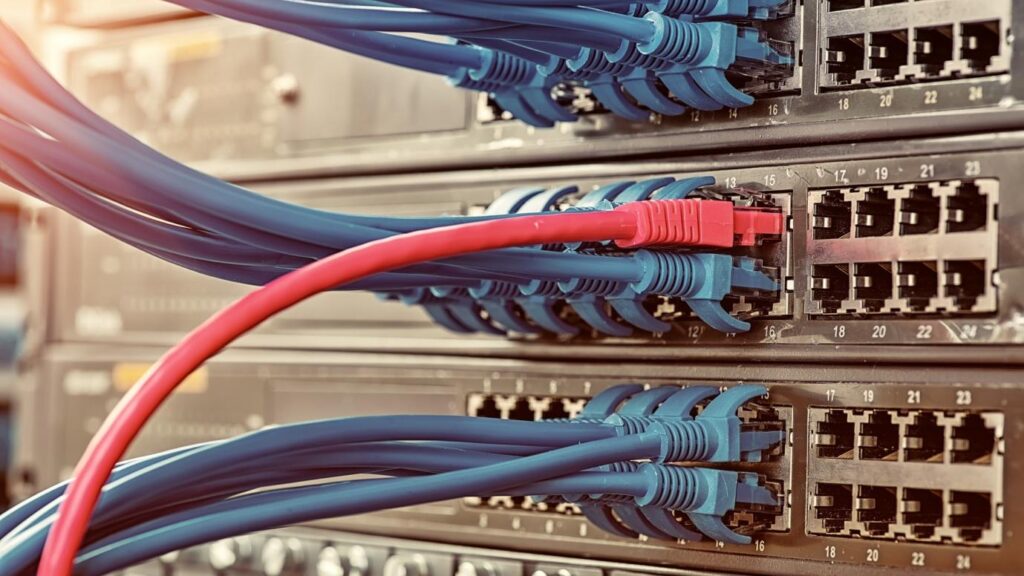
In today’s competitive business landscape, being off the grid is a luxury most businesses can’t afford. We mean this quite literally, given that network downtime costs small businesses $423 every minute. Large businesses have it worse, losing over $9000 by the minute.
Businesses rely on their network connectivity to stay connected with customers, suppliers, and partners. It’s not uncommon for businesses to experience network connectivity problems every once in a while. These problems can be very costly and disruptive, which means a lot of money down the drain.
The good news is that all of these issues with network connectivity are completely avoidable with the right tips and tricks. Today, we’ll be discussing some network tips and tricks you can employ to avoid network connectivity problems.
Upgrade Your Equipment
One of the best ways to avoid network connectivity problems is to ensure that your equipment is up-to-date. Outdated routers and switches are one of the most common causes of connectivity issues. By upgrading your equipment, you can ensure that your network is able to handle the demands of your business.
Don’t be overly reluctant about upgrading your network infrastructure. While it costs a pretty penny, the long-term savings will be worth it. Don’t forget, you lose a ton of money because of downtime.
Have a Backup Power Source
Another way to avoid network connectivity problems is to have a backup power source. Power outages are one of the most common causes of network downtime. By having a backup power source, you can ensure that your network stays up and running even if there’s a power outage.
There are a few different options for choosing a backup power source. You can choose between a UPS (uninterrupted power supply), a generator, or even solar power.
You should also make sure that your network devices are properly configured to use the backup power source. If you’re not sure how to do this, you can always contact your equipment vendor for help.
Implement a Redundant Network Connection
Another way to avoid network connectivity problems is by implementing a redundant network connection. A redundant network connection is an extra network connection that can be used if the primary connection fails.
Having a redundant network connection is especially important for businesses that rely heavily on their network. By having a redundant connection, you can ensure that your business stays up and running.
Ensure Adequate Staff Training
Sometimes issues with your network connectivity have more to do with your staff members than the hardware. Even simple acts like pulling the wrong plug or configuration errors can disrupt network connectivity.
As such, it’s important to train your staff on the proper way to use IT infrastructure, especially network equipment.
Your staff should be familiar with the basics of networking and how to troubleshoot common problems. If you don’t have the time or resources to train your staff, you can always hire a consultant to do it for you.
Just make sure you choose a reputable and experienced professional to handle the training.
Update Software
We already mentioned something about updating hardware, which is an absolute must. But while you’re at it, don’t forget to update the software too. Software updates consist of patches and fixes that improve the software’s functionality.
Invest in Enterprise-Level Infrastructure
Business owners make the mistake of getting low-grade network equipment to cut costs. However, this works to their detriment because they break down frequently, leading to connectivity problems. A better way would be to invest in high-quality, industry-level infrastructure.
High-grade equipment will be super reliable and rarely have issues. They also last a lifetime, making them a long-term investment. Although costly, the long-term returns on enterprise-level network infrastructure make them worth it.
Identify and Rectify Network Weaknesses
Examine your current network setup to identify and rectify any weaknesses. The first step is to carry out a comprehensive assessment of the network. This will help you to pinpoint problem areas that need improvement or elements you need to do away with.
Ensure you examine both internal and external factors that contribute to connectivity disruption. Whether it’s power outages or malware circulating within the network, make sure you point the issue out.
After that, you can take steps to correct these issues for seamless network connectivity.
Ensure Hardware Compatibility
Hardware compatibility issues are one of the main reasons businesses experience network connectivity problems. When you make any changes that aren’t compatible with the devices in the network, the network will likely fail. Make sure you’re using compatible hardware from the same vendor to avoid any potential disruptions.
If you’re unsure about compatibility, always reach out to the manufacturer for clarification. By doing this, you can be certain that all your hardware works together and doesn’t cause any network connectivity issues.
What Are Some Common Network Problems
It’s hard to prevent network connectivity problems without knowing what problems are there in the first place. Networks are prone to a myriad of problems, but some of the most common ones include:
Physical Connectivity Issues
One of the most common network connectivity problems is physical disruptions. This could be anything from a loose cable to bad weather taking down an entire network.
Although some of these issues are beyond your control, you can take steps to prevent most of them. Start by regularly checking your network infrastructure for any physical damage. This includes examining cables, connections, and devices for any signs of wear and tear.
If you spot any damage, make sure you fix it immediately to avoid connectivity issues. Another physical issue that can cause problems is interference. If there are other devices in the area using the same frequency as your network, it can cause interference and disrupt connectivity.
You can avoid this by making sure you keep your devices away from anything that might cause interference. If that’s impossible, consider implementing networking equipment that is immune to interference. You can try Ethernet connections, for instance.
Very Slow Connections
One of the most common network issues is very slow connections. This could be due to several factors, including low-quality equipment, high traffic, or malicious attacks.
For slow connections, the first step is to find out what’s causing the problem. If it’s your network infrastructure, then it’s time for an update. If it’s excessive traffic, look for ways to increase your network’s bandwidth.
Slow connections aren’t too serious, but they hinder productivity, compromising profitability.
Weak Wi-Fi Signal
Another common network issue is a weak Wi-Fi signal. It’s common for some areas to have a strong wi-fi signal, while others have a weak one. This is often due to the router’s placement and interference from other devices.
First, make sure you place the router in a central location. If that doesn’t work, try using a different frequency or changing the channel. You can also try using a Wi-Fi extender to amplify the signal.
A weak Wi-Fi signal isn’t a significant problem, but it’s very annoying. It can be frustrating trying to work in an area with a weak signal, so it’s best to rectify the issue as soon as possible.
Firewall Errors
A firewall is a network security system that monitors and controls incoming and outgoing traffic. It’s an essential part of any network, but it’s also prone to errors.
Firewall errors can cause a myriad of problems, including slow connections, weak signals, and sometimes complete network failure. It also makes the network more vulnerable to malware and cyber-attacks. Update your firewall and carry out regular tests to ensure it works as it should.
Excessive CPU Usage
Some applications take up a lot of network resources, including processing power and storage. These applications compromise the network’s functionality since they take up all the processing power. You can use Task Manager to find out which of your applications are hoarding resources.
Check whether the tasks are critical to your operations, and if not, terminate them. However, note that terminating power-intensive apps isn’t a guarantee that you’ll free up CPU resources. In some cases, malware could use up CPU resources and affect network connectivity.
If terminating power-intensive apps doesn’t take care of the issue, you might want to talk to a professional. That way, they can pick out whatever’s using up your CPU’s resources and find a way to reduce their usage.
Duplicate and Static IP Addresses
Duplicate IP addresses are a common problem in networks with multiple connections. This is when two or more devices are assigned the same IP address. A dynamic host configuration protocol (DCHP) will resolve this issue by automatically assigning IP addresses.
Duplicate IP addresses aren’t a huge problem, but they can cause some connectivity issues. They may not be too difficult to resolve, but it’s best to avoid them. Another thing that may interfere with your connectivity is a static IP address.
Static IP addresses are when a device is manually assigned an IP address that doesn’t change. If you have a static IP address, then you’ll have to assign each device a unique IP address. This can be time-consuming, but it’s essential to maintaining a functional network.
This can be problematic since it’s easy to forget what the IP address is, especially if it’s not well-documented. If you must use static IP addresses, make sure to document them well. That way, you won’t have any trouble connecting to the network.
Printer Connectivity Issues
Aside from the router, the printer is easily the most shared device in a workplace setting. Network issues may trickle down to connectivity problems with the printer. This is very inconvenient and wastes a lot of time.
If PCs on the network don’t connect to the printer, check whether the printer is on and plugged in correctly. Next, try restarting the printer spooler and see if that works. If it doesn’t, check for software updates on the manufacturer’s website.
How to Troubleshoot Network Connectivity Problems
Troubleshooting network connectivity issues is the first step to rectifying them. Here are a few ways to troubleshoot issues with your network.
Try the Ping and Tracer Method
One way to test your network’s connectivity is by pinging an IP address. This sends a message to the specified IP address and measures how long it takes for the message to be sent back, known as latency.
To do this, open the Command Prompt and type “ping” followed by the IP address. If there are no problems with the network, you should see replies from the IP address. If there are no replies or the latency is high, then there might be some connectivity issues.
Use the Traceroute Tool
The Traceroute tool shows the route that data takes to reach its destination. It also measures how long it takes for data to reach each hop. To use the Traceroute tool, open the Command Prompt and type “tracert” followed by the IP address.
If there are no problems with the network, you should see replies from each hop. If there are no replies or the latency is high, then there might be some connectivity issues.
Try USing a Packet Sniffer
A packet sniffer is a tool that can analyze network data and find problems with the network. To use a packet sniffer, you need to install one on your computer. There are many different packet sniffers available, so choose one that’s compatible with your operating system.
Once you’ve installed the packet sniffer, open it and select the network interface that you want to use. Then, start capturing packets. If there are no problems with the network, you should see packets being captured.
If there are no packets being captured or the latency is high, then there might be some connectivity issues.
Hire Network Experts
If you’re still having trouble with your network, it might be time to hire some experts. Network experts can help you troubleshoot the problem and find a solution. They can also help you prevent future connectivity issues.
Hiring network experts is a big decision, but it’s often the best way to solve complex networking problems. You can hire a reputable business IT support services company that’ll make sure your network remains in tip-top shape.
Do Away With Network Connectivity Problems for Good
Network connectivity problems can be a huge pain, but there are ways to prevent them. By using static IP addresses, documenting well, and troubleshooting with the ping and traceroute tools, you can sidestep these issues. If all else fails, hire some experts to help you out.
With these tips, you can do away with network connectivity issues for good. Don’t forget to check out the other posts on the site for more informative content.








